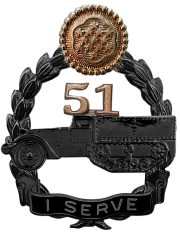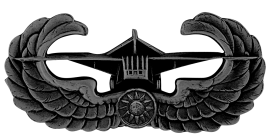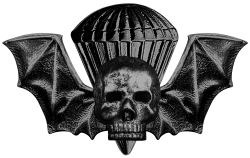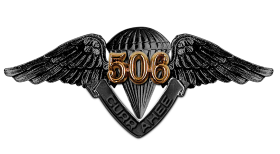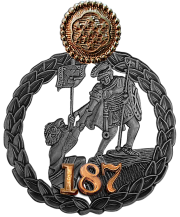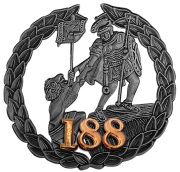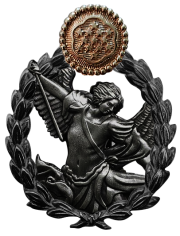Headgear unit insignia
A headgear unit insignia (HUI) is a metallic badge worn by soldiers in the United States Army on their headgear, including service caps, garrison caps, and berets if authorized.
The first HUI were introduced as part of the U.S. Army Regimental Management and Identity Combat Arms Standard (REMICS) reform of 1971 as a supplement to the distinctive unit insignia worn (DUI) by regiments and separate battalions. The intent was to improve esprit de corps and identity within U.S. Army regiments and similar units. The heraldic DUI would continue to be worn on shoulder loops for enlisted personnel, but the new HUI would be worn on all headgear authorized for wear with service and dress uniforms.
Generally speaking HUI correspond to battle groups, battalions, squadrons, and groups with regimental or corps affilitations. Since the REMICS reform, it's been U.S. Army to allow enlisted personnel to serve in their first battalion until the rank of Sergeant First Class if they choose to. Meanwhile, officers are allowed to fulfill at least one key development assignment up to the rank of Major (such as platoon leader, company commander, etc.) within a subunit of their home regiment by regulation. Whenever possible they'd complete early broadening assignments within the same division or corps as their parent regiment. It is not always possible for a Lieutenant Colonel to command a battle group or battalion in the same regiment, but it is considered the norm. In cases where soldiers are seconded to echelons above regiment, such as a Division HQ or Corps-level team, they remain on the roll of their home regiment and continue to wear its HUI/DUI. Likewise, if an officer is promoted to Colonel and necessarily takes on a command or staff assignment outside of one of their regiment's battalions they are authorized to wear the headgear of their home regiment.
